Huawei P30 Pro vs. Mate 20 Pro: Which is right for you?

Huawei P30 Pro
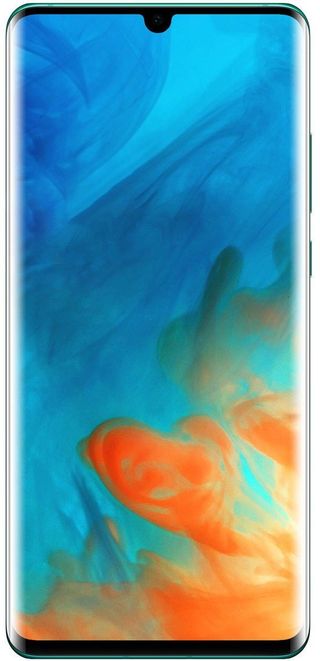
Huawei's new P30 Pro is an impressive, imposing flagship, with little that gets in the way of using the massive 6.47-inch OLED display as an oversized viewfinder for one of the most feature-packed camera setups ever seen on a phone.
Huawei P30 Pro
Zoom in closer
Huawei Mate 20 Pro

The Mate 20 Pro debuted Huawei's impressive Kirin 980 SoC and advanced its already-great camera game with 3x zoom, huge 4200mAh battery with 40W wired charging, and impressive 3D face unlock.
Huawei Mate 20 Pro
Last year's beast
Even though the Mate 20 Pro is six months old, it still holds up to some of the best phones in the industry. And thanks to numerous software updates since its launch, it's more performant and stable than ever. On the other hand, the P30 Pro offers one of the most impressive camera loadouts we've ever seen on a phone, and with its 5X periscope zoom lens and promises of impressive low-light results from a new 40MP RYYB sensor, it could be the new king of optics.
Which one should you buy?
If you're in the market for a flagship phone, and your priority is photography, you have a few options — there's Google's Pixel 3, which uses software to eke brilliance from its single 12MP rear camera; there's the Galaxy S10 series, which does a decent job with most environments; and there's Huawei's P and Mate series phones.
We already know how well the Mate 20 Pro does in almost every lighting environment and shooting situations — it has a 40MP main rear shooter, a 20MP ultra-wide camera, and an 8MP telephoto option with 3X optical zoom. It also has one of the best low-light modes in the business.
Now the P30 Pro offers the same but more, with an improved core sensor and an embarrassing-for-the-rest-of-the-industry 5X optical "periscope" zoom lens that promises 10X near-lossless hybrid zoom. Oh, and a rear time-of-flight sensor for improved artificial bokeh.
But which one should you buy?
Be an expert in 5 minutes
Get the latest news from Android Central, your trusted companion in the world of Android
| Category | Huawei Mate 20 Pro | Huawei P30 Pro |
|---|---|---|
| Screen | 6.39-inch curved OLED3120 x 144019.5:9 | 6.47-inch Curved OLED2340x1080 pixels19.5:9 |
| Chipset | Kirin 980 with Dual NPU | Kirin 980 with Dual NPU |
| Memory | 6GB RAM | 8GB RAM |
| Storage | 128GB | 128GB256GB512GB |
| Expandable storage | Yes, Nano memory | Yes, Nano memory |
| Battery | 4200mAh40W Huawei SuperCharge15W Wireless Quick ChargeReverse Wireless Charging | 4,200mAh40W Huawei SuperCharge15W Wireless Quick ChargeReverse Wireless Charging |
| Rear Camera 1 | 40MPWide-angle, f/1.8, OIS | 40MP SuperSpectrumWide angle, f/1.6, OIS |
| Rear Camera 2 | 20MP Ultra wide angle, f/2.2 | 20MP ultra wide angle, f/2.2 |
| Rear Camera 3 | 8MP3X Optical zoom, f/2.4, OIS | 8MP Periscope5X Optical zoom, f/3.4, OIS |
| Rear Camera 4 | None | Time-of-flight camera |
| Front camera | 24MP, f/2.0 | 32MP, f/2.0 |
| OS | Android 9 PieEMUI 9 | Android 9 PieEMUI 9.1 |
| Water and dust resistance | IP68 | IP68 |
| Audio | No Headphone jackDolby Atmos, Type-CBT aptX, aptX HDLDAC, LHDCHi-Fi DAC | No Headphone jackDolby Atmos, Type-CBT aptX, aptX HDLDAC, LHDC |
| Connectivity | Cat 21, up to 1.4GbpsWi-Fi 802.11a/.b/g/n/acBT 5.0, NFC | Cat 21, up to 1.4GbpsWi-Fi 802.11a/.b/g/n/acBT 5.0, NFC |
| Colors | Emerald GreenMidnight BlueTwilightPink GoldBlack | Amber SunriseBreathing CrystalPearl WhiteAuroraBlack |
Out the gate, you can see that there's a lot of similarity between the Mate 20 Pro and P30 Pro. The biggest difference is obviously the design, which sees the P30 look a little sleeker with narrower bezels, a more tempered notch, and a flat top and bottom to complement its symmetrical curved sides. But these are clearly Huawei phones.
The back of the phone also shows the differences in the way Huawei approaches its camera loadout between the two series; the P30 has an asymmetrical vertical stripe of sensors and lenses, whereas the Mate 20 centers its squared camera module. Both protrude a bit from the rear, but the P30's is more noticeable and potentially more disruptive.
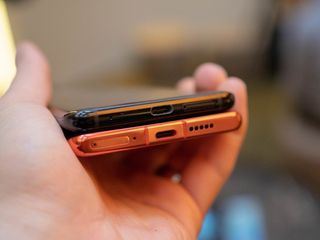
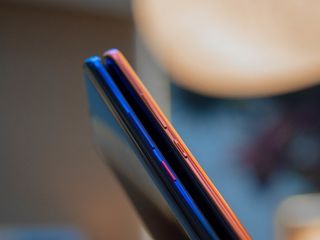

The other main spec difference is that the P30 Pro's OLED display, despite being bigger, is significantly less sharp; the 6.47-inch curved OLED screen is only 1080p, whereas the Mate 20 Pro's is 1440p. While I had a hard time pixel-peeping the lower resolution on the P30 Pro, it's definitely something to consider, especially at this flagship level (and flagship price). Huawei's always insisted that its panels are far more than just their resolution, and the P20 Pro backs that up — it's also 1080p — but this is 2019, and there may be some pushback from potential customers who want a sharper experience.
The Mate 20 Pro also has a larger front notch, which enables 3D facial unlock, something that the P30 Pro lacks. The newer phone also lacks a front earpiece entirely, using its OLED display to create something called "electromagnetic levitation," a fancy way of saying the screen is used as a speaker. It's unclear how this affects call quality, but it certainly won't be better than a dedicated earpiece, so if calls are a priority, perhaps you'll want to steer clear of the P30.
The P30 Pro and Mate 20 Pro are matched spec for spec in many ways, but the P30 Pro trades some power user features for a better camera experience.
Elsewhere, from a specs perspective, the P30 Pro bumps the RAM to 8GB from the Mate 20 Pro's 6GB and adds 256GB and 512GB storage options. The rest is fairly similar, including the known-quantity of the Kirin 980 SoC, 4200mAh battery with 40W SuperCharge fast wired charging and 15W wireless charging, along with the gimmicky reverse wireless charging that we love to hate.
Of course, both phones have in-display fingerprint sensors, but the one in the P30 Pro has been updated over that Mate 20 Pro's for better reliability and speed. That said, it's still optical, which makes it less likely to work when a finger is cold, dirty, or wet, so I'd take the Galaxy S10's over either of these any day of the week. That said, the P30 Pro, like the Mate 20 Pro, is IP68 water and dust resistant, so there's no problem actually using the phone in inclement weather.
Then there's the colors: the Huawei Mate 20 Pro comes in a stunning Twilight and arresting Emerald Green, but the P30 Pro steals the show with its new Amber Sunrise and Breathing Crystal options — garish and hyperbolic names, to say the least, but gorgeous nonetheless. I had a chance to use the Amber Sunrise P30 Pro for a while, and it's easily the nicest-looking phone I've ever used. Too bad, like the Mate 20 Pro, I'll probably need to put a case over it because of its slippery glass frame.
The difference comes down to the camera
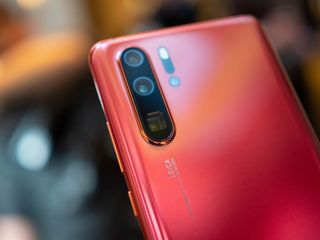
We can spend a lot of time negotiating the minor differences in specs between Huawei's late-2018 flagship and its early 2019 counterpart, but the reality is that little of it matters next to the camera upgrades.
Huawei says that it's basically re-engineered the entirety of the camera stack on the P30 Pro, opting for an improved 40MP core sensor that uses a unique RYYB (Red, Yellow, Yellow, Blue) pixel arrangement compared to the traditional RGB array on the Mate 20 Pro's. That alone should offer improved low-light performance, Huawei says that it's also made dramatic improvements to the computational photography processing on the P30 Pro, creating more accurate exposure maps for HDR shots that should result in fewer blown highlights or too-dark areas in photos with extreme dynamic range. The main sensor is also paired with a wider f/1.6 aperture compared to the Mate 20 Pro's f/1.8 lens, which should also result in better low-light results.
Elsewhere, Huawei is maintaining its 20MP ultra-wide sensor, but it says that there should be less distortion and fewer artifacts this time around. While Samsung has opted to include an ultra-wide lens with all of its S10 models, Huawei's implementation is still impressive all the same.
The P30's Pro's pièce de résistance is its 5X periscope lens, which uses a prism to reflect light off a lens at a 90-degree angle (so as not to force the chassis to thicken considerably). The result is lossless zoom up to 5x, or a 125mm equivalent focal length, so far unheard of on a smartphone. Paired with the other cameras, plus software optimizations, Huawei claims near-lossless 10x zoom on the P30 Pro, and while we already saw this on the Mate 20 Pro, it should be considerably better here.
Finally, the P30 Pro boasts a time-of-flight camera, something we've seen more often lately on devices like the Honor View 20 and upcoming Samsung Galaxy S10 5G. The main advantage to such a sensor is the gleaning of more depth information that, when paired with Huawei's portrait or bokeh modes, should make for cleaner outlines around subjects. Huawei's portrait mode feature has been pretty iffy in the past, so I'm encouraged by the addition of the ToF.
The availability conundrum
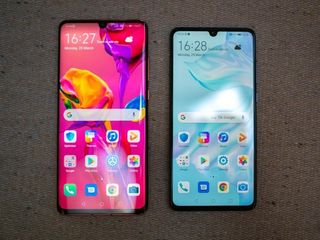
Like the Mate 20 Pro, the P30 Pro won't officially be available in the U.S. (though it will be sold in Canada, where all phones are unlocked, hint hint). That means the phone will not directly compete with the devices it's so well matched with, the Galaxy S10+, iPhone XS Max and others in its class. It's easily imported, but will lack a U.S. warranty or specific network optimizations.
Elsewhere in the world, the P30 Pro should be one of the more popular devices of 2019, especially in that delicious Amber Sunrise colorway. While bigger than the Mate 20 Pro and potentially less attractive to power users given its lower-resolution display and lack of 3D face unlock.
Either way, if you can get your hands on a Huawei P30 Pro, you'll likely be pretty happy — especially if camera quality and variety of shooting methods is your top concern.

The next great photography phone
There's lots to like about the Huawei P30 Pro, but it's the camera loadout that makes us most excited for it. With its 5X lossless zoom and 10x near-lossless hybrid zoom, there isn't a better camera phone on the market.

The well-rounded 2018 flagship
The Huawei Mate 20 Pro is smaller than the P30 Pro and has a nicer display, but its camera setup is outmatched by Huawei's new flagship. Its 3D facial unlock is still best-in-class, and it's got plenty of great colors to make it interesting.
Daniel Bader was a former Android Central Editor-in-Chief and Executive Editor for iMore and Windows Central.

